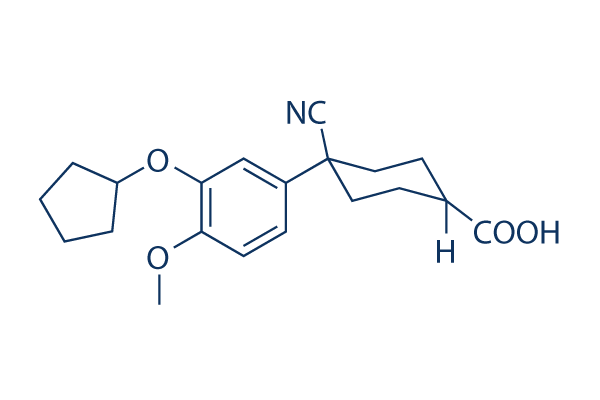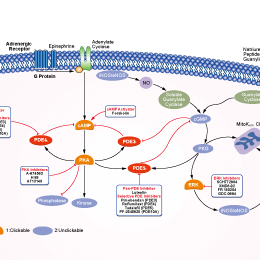
- Bioactive Compounds
- By Signaling Pathways
- PI3K/Akt/mTOR
- Epigenetics
- Methylation
- Immunology & Inflammation
- Protein Tyrosine Kinase
- Angiogenesis
- Apoptosis
- Autophagy
- ER stress & UPR
- JAK/STAT
- MAPK
- Cytoskeletal Signaling
- Cell Cycle
- TGF-beta/Smad
- DNA Damage/DNA Repair
- Compound Libraries
- Popular Compound Libraries
- Customize Library
- Clinical and FDA-approved Related
- Bioactive Compound Libraries
- Inhibitor Related
- Natural Product Related
- Metabolism Related
- Cell Death Related
- By Signaling Pathway
- By Disease
- Anti-infection and Antiviral Related
- Neuronal and Immunology Related
- Fragment and Covalent Related
- FDA-approved Drug Library
- FDA-approved & Passed Phase I Drug Library
- Preclinical/Clinical Compound Library
- Bioactive Compound Library-I
- Bioactive Compound Library-Ⅱ
- Kinase Inhibitor Library
- Express-Pick Library
- Natural Product Library
- Human Endogenous Metabolite Compound Library
- Alkaloid Compound LibraryNew
- Angiogenesis Related compound Library
- Anti-Aging Compound Library
- Anti-alzheimer Disease Compound Library
- Antibiotics compound Library
- Anti-cancer Compound Library
- Anti-cancer Compound Library-Ⅱ
- Anti-cancer Metabolism Compound Library
- Anti-Cardiovascular Disease Compound Library
- Anti-diabetic Compound Library
- Anti-infection Compound Library
- Antioxidant Compound Library
- Anti-parasitic Compound Library
- Antiviral Compound Library
- Apoptosis Compound Library
- Autophagy Compound Library
- Calcium Channel Blocker LibraryNew
- Cambridge Cancer Compound Library
- Carbohydrate Metabolism Compound LibraryNew
- Cell Cycle compound library
- CNS-Penetrant Compound Library
- Covalent Inhibitor Library
- Cytokine Inhibitor LibraryNew
- Cytoskeletal Signaling Pathway Compound Library
- DNA Damage/DNA Repair compound Library
- Drug-like Compound Library
- Endoplasmic Reticulum Stress Compound Library
- Epigenetics Compound Library
- Exosome Secretion Related Compound LibraryNew
- FDA-approved Anticancer Drug LibraryNew
- Ferroptosis Compound Library
- Flavonoid Compound Library
- Fragment Library
- Glutamine Metabolism Compound Library
- Glycolysis Compound Library
- GPCR Compound Library
- Gut Microbial Metabolite Library
- HIF-1 Signaling Pathway Compound Library
- Highly Selective Inhibitor Library
- Histone modification compound library
- HTS Library for Drug Discovery
- Human Hormone Related Compound LibraryNew
- Human Transcription Factor Compound LibraryNew
- Immunology/Inflammation Compound Library
- Inhibitor Library
- Ion Channel Ligand Library
- JAK/STAT compound library
- Lipid Metabolism Compound LibraryNew
- Macrocyclic Compound Library
- MAPK Inhibitor Library
- Medicine Food Homology Compound Library
- Metabolism Compound Library
- Methylation Compound Library
- Mouse Metabolite Compound LibraryNew
- Natural Organic Compound Library
- Neuronal Signaling Compound Library
- NF-κB Signaling Compound Library
- Nucleoside Analogue Library
- Obesity Compound Library
- Oxidative Stress Compound LibraryNew
- Plant Extract Library
- Phenotypic Screening Library
- PI3K/Akt Inhibitor Library
- Protease Inhibitor Library
- Protein-protein Interaction Inhibitor Library
- Pyroptosis Compound Library
- Small Molecule Immuno-Oncology Compound Library
- Mitochondria-Targeted Compound LibraryNew
- Stem Cell Differentiation Compound LibraryNew
- Stem Cell Signaling Compound Library
- Natural Phenol Compound LibraryNew
- Natural Terpenoid Compound LibraryNew
- TGF-beta/Smad compound library
- Traditional Chinese Medicine Library
- Tyrosine Kinase Inhibitor Library
- Ubiquitination Compound Library
-
Cherry Picking
You can personalize your library with chemicals from within Selleck's inventory. Build the right library for your research endeavors by choosing from compounds in all of our available libraries.
Please contact us at info@selleckchem.com to customize your library.
You could select:
- Antibodies
- Bioreagents
- qPCR
- 2x SYBR Green qPCR Master Mix
- 2x SYBR Green qPCR Master Mix(Low ROX)
- 2x SYBR Green qPCR Master Mix(High ROX)
- Protein Assay
- Protein A/G Magnetic Beads for IP
- Anti-Flag magnetic beads
- Anti-Flag Affinity Gel
- Anti-Myc magnetic beads
- Anti-HA magnetic beads
- Poly DYKDDDDK Tag Peptide lyophilized powder
- Protease Inhibitor Cocktail
- Protease Inhibitor Cocktail (EDTA-Free, 100X in DMSO)
- Phosphatase Inhibitor Cocktail (2 Tubes, 100X)
- Cell Biology
- Cell Counting Kit-8 (CCK-8)
- Animal Experiment
- Mouse Direct PCR Kit (For Genotyping)
- New Products
- Contact Us
research use only
Cilomilast PDE inhibitor
Cilomomilast (SB-207499) is a potent PDE4 inhibitor with IC50 of about 110 nM, has anti-inflammatory activity and low central nervous system activity. Phase 3.

Chemical Structure
Molecular Weight: 343.42
Purity & Quality Control
Batch:
Purity:
99.94%
99.94
Related Products
| Related Targets | PDE1 PDE2 PDE3 PDE4 PDE5 PDE6 PDE10A PDE9 PDE4B | Click to Expand |
|---|---|---|
| Related Products | Rolipram IBMX Icariin Mardepodect (PF-2545920) Deltarasin PF-8380 Enpp-1-IN-1 Ibudilast GSK256066 Ziritaxestat (GLPG1690) TAK-063 Doxofylline Diosgenin BRL-50481 S-(+)-Rolipram | Click to Expand |
| Related Compound Libraries | Metabolism Compound Library Anti-cancer Metabolism Compound Library Glutamine Metabolism Compound Library Carbohydrate Metabolism Compound Library Lipid Metabolism Compound Library | Click to Expand |
Signaling Pathway
Cell Culture and Working Concentration
| Cell Lines | Assay Type | Concentration | Incubation Time | Formulation | Activity Description | PMID |
|---|---|---|---|---|---|---|
| Sf9 cells | Function assay | Inhibition of human Phosphodiesterase 4A isoform using construct representing the common region of spliced variants expressed as GST-fusion proteins in Sf9 cells, IC50=0.038 μM | ||||
| sf21 cells | Function assay | Inhibition of human full length PDE4A4 expressed in baculovirus infected sf21 cells, IC50=0.062 μM | ||||
| human peripheral blood mononuclear cells | Function assay | Inhibition of TNF-alpha release from human peripheral blood mononuclear cells, IC50=3.467 μM | ||||
| U937 cells | Function assay | Arbitary maximal response for cAMP elevation from baseline level was evaluated in Human U-937 cells, EC50=3.63 μM | ||||
| Click to View More Cell Line Experimental Data | ||||||
Mechanism of Action
| Features | Cilomilast has been used to treat chronic obstructive pulmonary disease (COPD) for many years. | ||||
|---|---|---|---|---|---|
| Targets |
|
In vitro |
||||
| In vitro | Cilomilast produces a concentration-dependent increase in cAMP content in U937 cells. This compound produces a concentration-dependent increase in cAMP content in U937 cells. [2] In isolated human monocytes, it and (R)-rolipram are equipotent at suppressing LPS-induced TNF-α formation with -log (IC50) of 7.0 and 7.2, respectively. Both this compound and (R)-rolipram produces a modest prevention of fMLP-induced degranulation of human neutrophils. It and (R)-rolipram are equipotent at suppressing neutrophil activation with -log (IC50) of 7.1 and 6.4, respectively. [2] This chemical significantly decreases the expression of TNF-α in the cornea and IL-1α, IL-1β, and TNF-α in the conjunctivaas compared to vehicle control. Its treatment markedly decreases the presence of CD11b+ antigen-presenting cells in the central and peripheral cornea, and leads to decreased conjunctival expression of cytokines IL-6, IL-23, and IL-17. Moreover, it decreases the expression of IL-17 and IL-23 in the draining lymph nodes. [3] It reduces TLR4 expression, IL-8 release and neutrophil chemotactic activity as well as it increased IP-10 release and lymphocyte chemotactic activity. [4] | |||
|---|---|---|---|---|
| Cell Research | Cell lines | U937 cells | ||
| Concentrations | 0.1-10 μM | |||
| Incubation Time | 5 min | |||
| Method | U937 cells (1-2 × 10 6) are incubated at 37 °C in a shaking water bath with Cilomilast for 1 min before the addition of 0.1 μM PGE2 (total volume of 200 μL). The incubation proceeds for an additional 4 min and is stopped by the addition of 0.1 mL of HClO4 (17.5%), neutralized with 0.15 ml of K2CO3 (1.0 M) and diluted to 1 mL with sodium acetate buffer. Samples are centrifuged at 3000 × g for 10 min. Aliquots of the supernatant fraction are assayed for cAMP content by radioimmunoassay using commercially available kits. | |||
In Vivo |
||
| In vivo | Cilomilast inhibits human TNFα production with oral ED50 of 4.9 mg/kg. In contrast to their equipotent activity against TNFα production, this compound (ED50 = 2.3 mg/kg, p.o.) is 10-fold less potent than R-rolipram (ED50 = 0.23 mg/kg, p.o.) in reversing reserpine-induced hypothermia, a model of antidepressant activity. [1] In time course studies, this chemical (30 mg/kg, p.o.) suppresses TNFα production for at least 10 hour. The ability of this compound to modulate interleukin-4 productionin vivo is assessed in a chronic oxazolone-induced contact sensitivity model in Balb/c mice. Topical administration of this chemical (1000 μg) inhibits intralesional concentrations of interleukin-4. [1] Orally administered cilomilast dose-dependently inhibits production of interleukin-4, TNF-α, and cysteinyl leukotrienes, as well as leukocyte infiltration in bronchoalveolar lavage fluid from the airways of ovalbumin-sensitized Brown Norway rats [5]. | |
|---|---|---|
| Animal Research | Animal Models | Balb/c, CD-1 and C57B1/6 male mice weighing from 18 to 25 g with human monocytes or endotoxin-induced shock |
| Dosages | 3, 6, 12, 25, 50 mg/kg | |
| Administration | Gavage | |
References |
|
Chemical Information
| Molecular Weight | 343.42 | Formula | C20H25NO4 |
| CAS No. | 153259-65-5 | SDF | Download SDF |
| Synonyms | SB-207499 | ||
| Smiles | COC1=C(C=C(C=C1)C2(CCC(CC2)C(=O)O)C#N)OC3CCCC3 | ||
Storage and Stability
| Storage (From the date of receipt) | |||
|
In vitro |
DMSO : 69 mg/mL ( (200.92 mM) Moisture-absorbing DMSO reduces solubility. Please use fresh DMSO.) Ethanol : 50 mg/mL Water : Insoluble |
Molecular Weight Calculator |
|
In vivo Add solvents to the product individually and in order. |
In vivo Formulation Calculator |
|||||
Preparing Stock Solutions
Molarity Calculator
In vivo Formulation Calculator (Clear solution)
Step 1: Enter information below (Recommended: An additional animal making an allowance for loss during the experiment)
mg/kg
g
μL
Step 2: Enter the in vivo formulation (This is only the calculator, not formulation. Please contact us first if there is no in vivo formulation at the solubility Section.)
% DMSO
%
% Tween 80
% ddH2O
%DMSO
%
Calculation results:
Working concentration: mg/ml;
Method for preparing DMSO master liquid: mg drug pre-dissolved in μL DMSO ( Master liquid concentration mg/mL, Please contact us first if the concentration exceeds the DMSO solubility of the batch of drug. )
Method for preparing in vivo formulation: Take μL DMSO master liquid, next addμL PEG300, mix and clarify, next addμL Tween 80, mix and clarify, next add μL ddH2O, mix and clarify.
Method for preparing in vivo formulation: Take μL DMSO master liquid, next add μL Corn oil, mix and clarify.
Note: 1. Please make sure the liquid is clear before adding the next solvent.
2. Be sure to add the solvent(s) in order. You must ensure that the solution obtained, in the previous addition, is a clear solution before proceeding to add the next solvent. Physical methods such
as vortex, ultrasound or hot water bath can be used to aid dissolving.
Tech Support
Answers to questions you may have can be found in the inhibitor handling instructions. Topics include how to prepare stock solutions, how to store inhibitors, and issues that need special attention for cell-based assays and animal experiments.
Tel: +1-832-582-8158 Ext:3
If you have any other enquiries, please leave a message.
* Indicates a Required Field






































